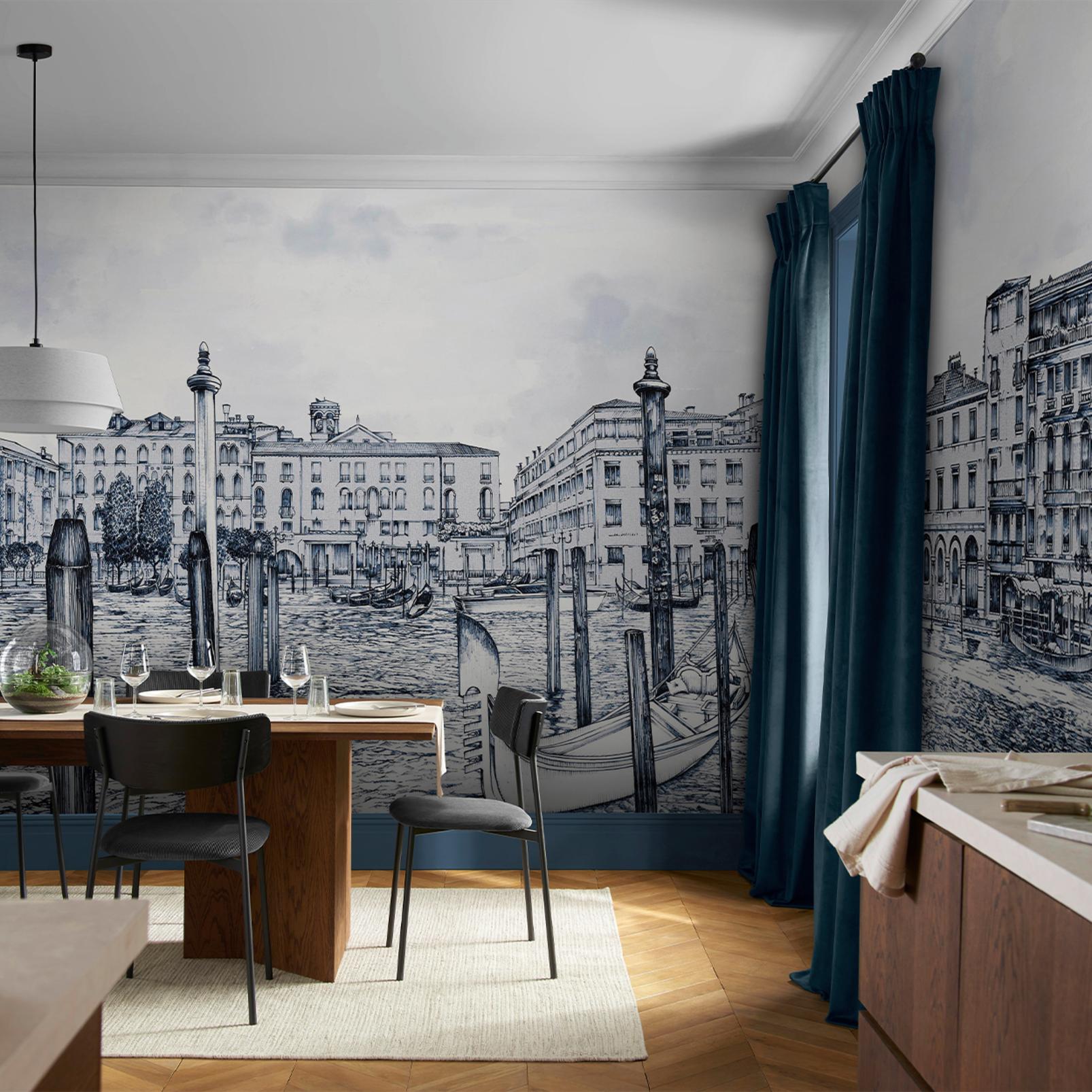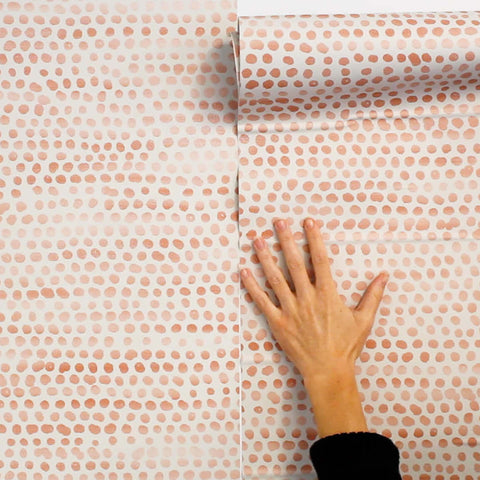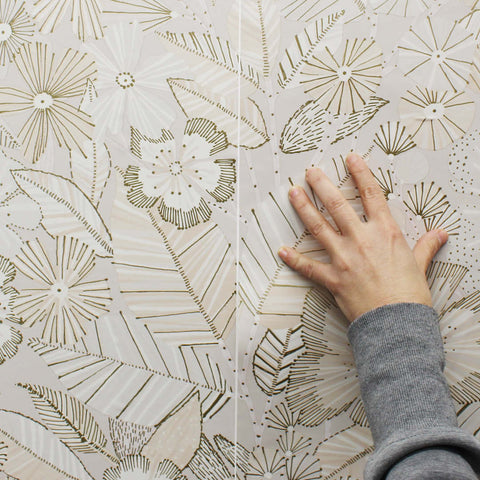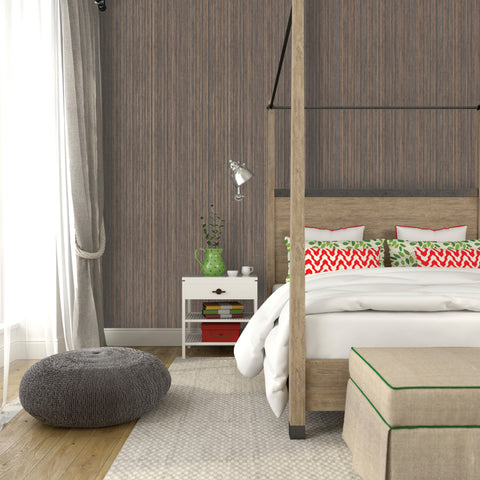Go Wallpaper or Mural? A Designer’s Decision Tree for Scale, Repeat & Budget

Hero image: Graham & Brown panoramic mural via Livingetc (image credit: Graham & Brown / Livingetc).
The short answer: choose wallpaper when you want rhythm, small-to-medium pattern repeat, and easy scaling across multiple walls. Choose a mural when you want a big, scene-like focal wall with artwork scaled to your exact dimensions.
Wallpaper vs. mural: the 30‑second compare
| Factor | Wallpaper | Mural (printed or hand‑painted) |
|---|---|---|
| Pattern & repeat | Repeating motif (straight/half‑drop/random); repeat length often 0–27″+ and affects waste & seams. | Usually one large composition; may be non‑repeatable or horizontally repeatable for wide spans. |
| Best use | All‑around: powder rooms, hallways, bedrooms; great for wrapping rooms and hiding minor wall flaws. | Feature walls, entries, dining rooms, long hallways; “view” rooms where you can step back and take it in. |
| Install complexity | DIY possible (esp. peel‑and‑stick); traditional papers benefit from pro install. | Printed murals install panel‑by‑panel; hand‑painted requires an artist and site time. |
| Typical cost* | Material + labor often $4–$10/sq ft (range varies by paper & prep). | Printed custom murals ~$7–$12/sq ft (material); hand‑painted ~$10–$40+/sq ft. |
*Ranges compiled from industry guides and vendors; see References for links.
A quick primer on pattern repeat (why it matters)


Repeat is the vertical distance before the design starts again. Smaller repeats (or “random match” textures) minimize waste and hide seams; big repeats yield drama but need careful measuring.
The decision tree: scale → repeat → budget
- Long wall or open plan (10–20 ft viewing distance): a mural reads like a window or landscape. Consider horizontally repeatable murals for ultra‑wide spans.
- Small room or close viewing (3–6 ft): wallpaper with small/medium repeats keeps texture without overwhelming.
- Ceilings & wraps: wallpaper excels; most murals are single‑wall features unless designed to repeat.
- Seam camouflage needed? Choose random match textures or tight repeats.
- Want large motifs? Go drop match wallpaper or a non‑repeatable mural sized to your wall.
- Wrapping corners? Wallpaper (especially small repeats) transitions more gracefully.
- Printed custom mural: plan roughly $7–$12/sq ft (material), plus install if you’re not DIYing.
- Hand‑painted mural: expect $10–$40+/sq ft, often with minimum square footage.
- Wallpaper: all‑in averages often $4–$10/sq ft (paper + labor), rising with specialty materials and wall repairs.
- High‑humidity zones: choose washable vinyl or vendor‑approved materials; some peel‑and‑stick adhesives are less forgiving around steam.
Pro tip: When to wrap the whole room vs. do a feature wall
Feature walls shine when there’s clear “frontality” (like a bed wall or dining focus). If the room lacks a natural focal wall—or you have many doorways—wrapping with wallpaper yields better visual rhythm and fewer abrupt pattern stops.
Material & install notes designers actually use
- Wallpaper match types: straight, half‑drop, random—pick based on seam tolerance and motif size.
- Printed mural formats: numbered panels; some collections now offer horizontally repeatable designs to span extra‑long walls.
- Bathrooms & laundry: prefer washable vinyl or vendor‑approved peel‑and‑stick; confirm humidity guidance before install.
- Sampling: a 20–24″ sample shows repeat scale; tape where you’ll see it from the sofa/bed to judge viewing distance.

More to explore (excellent external reads)
Cost cheat‑sheet (today’s typical ranges)
- Wallpaper (installed): about $4–$10 per sq ft all‑in depending on paper, wall condition, and labor.
- Printed mural (DIY‑ready materials): often $7–$12 per sq ft for custom prints from reputable vendors.
- Hand‑painted mural (artist): most pros quote $10–$40+ per sq ft with minimum square footage.
Always verify vendor specs, roll coverage, and repeat length before ordering—those are the biggest swing factors in total cost.
Related in Newsroom+
Leaning mural? See how major brands frame the trend in our breakdown of Graham & Brown’s 2026 picks—Divine Damson, Eternal Weave & Eternal City—plus room‑ready art pairings that keep the focus on your walls.
FAQ: People also ask
Is wallpaper or a mural better for small rooms?
Wallpaper with a tight or random repeat is more forgiving in small rooms and around corners. It hides seams and scales easily across multiple walls.
What repeat size is considered “large” on wallpaper?
Anything above ~21–27″ starts to feel large; it can look amazing but usually increases waste during matching. Always check the product’s listed repeat.
Can I use peel‑and‑stick in bathrooms?
Yes—if the brand states it’s moisture‑resistant and your ventilation is good. In steamy spaces, washable vinyl or prepasted papers are safer bets.
How do murals work on extra‑wide walls?
Look for horizontally repeatable murals, or commission custom sizing. Many collections now scale scenes across wider spans.
What’s cheaper—wallpaper or a mural?
Material prices overlap. Installed wallpaper often lands in the $4–$10/sq ft band; printed custom murals typically price $7–$12/sq ft for material, while hand‑painted murals cost more due to artist time.
References
- Sandberg Wallpaper — “Wall Mural vs. Wallpaper” (definitions, repeatability)
- Tempaper & Co. — Wallpaper match types (straight, drop, random)
- Milton & King — Why pattern repeat matters
- Angi — Wallpaper installation cost (2025)
- HomeGuide — Mural pricing averages | HomeAdvisor — Hand‑painted mural costs (2025)
- Tempaper — Custom printed mural pricing (example) | Power‑Graphics — Printed mural materials starting prices
- Edward Martin — Peel‑and‑stick in bathrooms (humidity notes) | Angi — Washable wallpaper for bathrooms
- AD PRO — Color Trend Report 2025
- Livingetc — Panoramic bespoke murals (Graham & Brown)
- Fashion Trendsetter — “Murals & Mouldings” trend (2025)

0 Kommentare